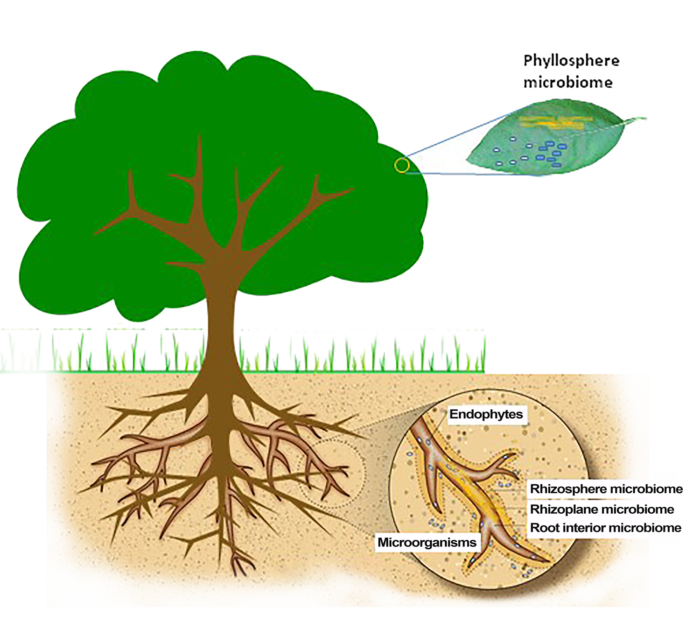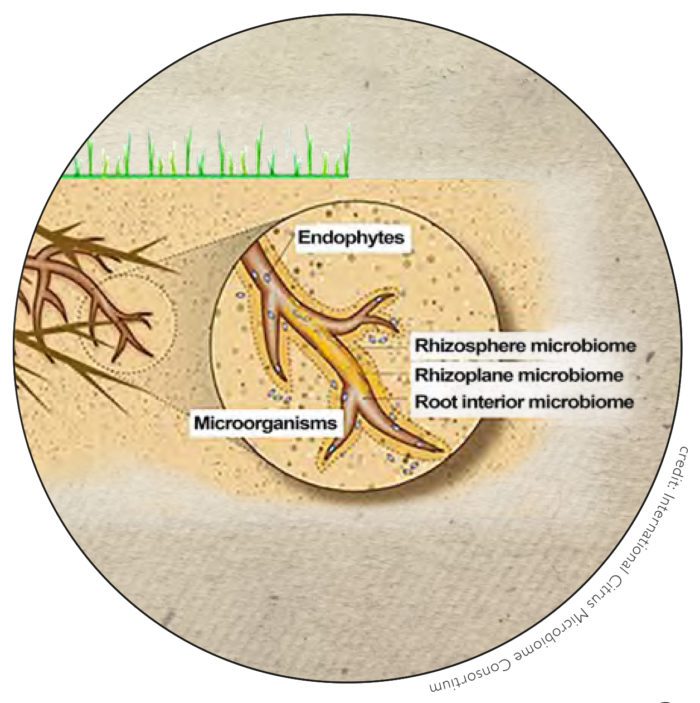Phytomicrobiom, or phytobiome, is a complicated word for a straightforward thing: the community of fungi, bacteria, and destructors that live in the root area of your plants. An intact phytobiome supports plants in many different ways, but science is only just beginning to understand the connections between them. Optimizing the phytobiome is the key to sustainable agriculture, satisfying our needs in harmony with nature.
Agriculture, as it is largely practiced here, is based on innovations of the 19th and 20th centuries and is outdated. Optimized nutrient uptake, improved tolerance to heat and drought, and adequate protection against insects have been guaranteed by companies such as Bayer Agrar and Monsanto, but unfortunately, not in an organic way.
Tale As Old As Time
For 650 million years, plants have been driving their roots into the soil searching for symbiotic microorganisms and using them to break down nutrients. For all of this time, they have been supplying these microorganisms with the carbohydrates they generate through photosynthesis, and in return, receive the nutrients they need to live, including nitrogen, phosphorus, and potassium. This relationship is known as symbiosis.
Since the late 1970s, it has been assumed that nutrient uptake and the performance of the plants can be improved by dissolving high-purity mineral salts in water with a fixed pH level and then pouring them over the root ball of the plants at regular intervals.
Good Growth
After following this approach myself for many years, I had this thought: If you look at the regions with the lushest vegetation on earth, such as the Amazon Basin, you will not find anyone there correcting the water pH or adapting the composition of nutrients to the separate life phases of the plants. There, the supply of nutrients is ensured through an intact ecosystem that includes living plants, fungi, bacteria, and destructors.
After coming to that realization, I started to shift my focus from the individual supply of my plants with nutrients to the creation of optimal conditions for fungi and bacteria. My understanding of the relationship between plants and their symbionts has changed fundamentally since then. I began using solid fertilizers by recycling used substrates and was overwhelmed by the results, and especially by the quality of the fruits. I worked for several years with various solid fertilizers, until I finally developed the recipe that I now distribute under the name FLO.
Symbiotic Relationships
When conditions are optimal, plants will release up to 25% of their carbohydrate yield to the phytobiome. Incredibly, they don’t just randomly enrich the soil with carbohydrates hoping that only useful microorganisms will multiply. Instead, they know to feed specific, beneficial organisms. They influence the composition of their phytobiomes and multiply those microorganisms that dissolve the nutrients they need. It is essential to note, however, that with the help of salicylic acid, a phytohormone, they can induce a kind of fever in certain root areas and kill the microorganisms living there.
The phytobiome also protects plants from pathogenic microorganisms and helps prevent soil diseases. Recent research shows the phytobiome also protects plants from insect pests. For example, the sucking behavior of aphids is influenced by the phytobiome. Various fungi and bacteria, the so-called endophytes, also grow from the soil into your plants and up in the leaf tips. They improve the function of the stomata and enable more efficient gas exchange. Other entomopathogenic fungi attack and kill insect pests and supply plants with the proteins (nitrogen) from the carcasses.
Mycologists (AKA mushroom scientists) repeatedly emphasize the importance of fungi for an intact phytobiome. About 30% of living forest soil contains mycelium, such as fungal tissue!
Fungi and Organic Farming
In my experience, Trichoderma and mycorrhiza play a critical role in the success of organic farming. The length of the mycelium in a single teaspoon of soil can be more than 5km (3 miles), and yet, the length of the plant root itself never exceeds 20cm (7.8”).
Trichoderma is a type of mold and decomposes organic raw materials with the help of aggressive enzymes; the same enzymes used in liquid products in house and allotment gardens. In mycorrhiza, a distinction is made between those species whose mycelium grows exclusively on the outside of the plant root, the so-called ectomycorrhiza, and those species whose hyphae grow inside the plant, the endomycorrhiza.
Today, I understand plants as complete organisms only when they are successfully connected with their symbionts in a holistic system. Along with living microorganisms, earthworms and groundcovers are also used. The earthworms loosen up the soil and combine the organic residues with the silicates in their intestines to form the valuable clay-humus complexes.
Typical ground coverers include clover, Lucerne, lupine, chamomile, and more. They are also an excellent choice for indoor growers, especially clover. The top 5-10cm (2-4”) in plant pots isn’t usually interspersed with roots; it is often hard and home to harmful insects or algae. Groundcovers are the remedy, protecting the soil from erosion, loosening and ventilating it, and reducing evaporation while also enriching the soil with nitrogen. Groundcover plants are also known as green fertilizers.
To optimize the conditions for the phytobiome, mix 30% coconut with the substrate and make sure it does not dry out. When growing with living microorganisms, the soil should always be more humid than in conventional cultivation. The result is a community of plants, fungi, bacteria, organic raw materials, earthworms, springtails, and so much more, making a wonderful home for the plants.
For my garden, I use the best microorganisms I can buy along with high quality, natural, raw materials; the rest is left to the plants and the phytobiome, which can do what they have been doing for 650 million years.

